Address: 624 - 626 Balmoral Street (Map)
Built: 1895
Architect: Unknown
City Hall looking west ca. 1898 (Past Forward)
This 2.5-storey, 5,552 square-foot, 22-unit rooming house was constructed in 1895.
At the time, what was then two single-family homes would have been on the outer edge of the city's urban development. The above image taken from city hall looking west in 1898 does not include Balmoral Street, which is off to the left, but shows that after just a few blocks urban development gives way to open land.
The nearest urban feature to the house is Central Park. That land was only purchased by the city in 1895 and it took a few years for it to be developed into a green space and for housing to be rise around it.
The West End, behind the house, was not subdivided for residential development until 1904 – 05.
The rear elevation (above) shows two distinct houses that are joined together by a common frontage. Exactly when the two were linked is unclear, though I suspect it was ca. 1905.
Both homes have had a connection with members of the Methodist Church, one was the home of a retired minister and the other the home of a widow of a minister. This could mean that the church was the ultimate owner of the buildings in their earliest years and leased or sold them.
Here is the early history of each home:
624 Balmoral Street (the taller house)
Howard Kirby spent ages 5 - 12 at the house.
Thompson Kirby was born in Yorkshire, England and came to Milton, Ontario with his parents when he was a toddler. In 1878, he went to Douglas, Manitoba to homestead and married Ina. By the 1890s, the couple were living in Winnipeg and had two sons, Howard T. Kirby (b. 1890) and Kenneth C. Kirby (b. 1897).
Top: Canada Permanent Building, bottom left (Past Forward)
Bottom: April 29, 1897, Winnipeg Free Press
Bottom: April 29, 1897, Winnipeg Free Press
Mr. Kirby was a lawyer and a collection agent specializing in the agricultural industry. He had an office and small staff in the Canada Permanent Building on Main Street at Graham Avenue, now demolished, and occasionally took out classified ads listing assorted machinery for sale. (His obituary, perhaps to avoid the negative connotation of his profession, stated that after moving to Winnipeg, he “became prominent in business circles.”)
After seven years, the family relocated to 311 Edmonton Street at Graham Avenue, now demolished. Perhaps it was a desire to be closer to the office or nearer the commercial and retail centre of town.
Soon after the move, Kirby began working for the Merchants Bank and was transferred to Victoria, B.C.. He retired from the bank in 1924 and died in 1942.
December 14, 1905, Winnipeg Free Press
In 1903, the home was converted into a rooming house. Classified ads in December advertise eleven "just finished" rooms for rent.
The owner, according to the Henderson Directory, was Mary Moran, widow of Methodist Rev. John X. Moran, and her two sons.
There were seven roomers noted during the Henderson Directory's 1906 visit. They were: John Lee, student; William Harper, clerk at Robinson and Black; N. B. Finn, clerk Robinson and Co.; Maggie Bunton, clerk at Carsley’s; Elgin Moran, clerk at Robinson and Co.; E. J. Moran, student; Mary Moran, widow.
626 Balmoral (the shorter house)
Source: Past Forward, Rob McInnes collection
Number 626 Balmoral first appears in the 1895 Henderson Directory as home to retired Methodist minister Rev. John Stewart and family.
Stewart was born in Ireland and his family settled in Ontario when he was a teenager. After being ordained, he worked in Quebec then came to Manitoba and preached at churches at Morden, Melita and Treherne. In 1894, he retired from his administrative duties and moved to Winnipeg with his wife and at least two of his three grown children.
Here, Stewart remained active in the temperance movement as a member of the Prohibition League, sometimes speaking at rallies and events. He stayed involved in church affairs through Grace Methodist Church in a volunteer capacity.
The Stewarts also rented out rooms. The 1895 Henderson Directory notes three lodgers: E. C. Kessell; Bert Gordon, student; John Cooke, student; and Duncan Cameron, shoemaker. The 1896 directory notes three students as rooming there.
The students were likely attending Wesley College, which began in the basement of Grace Church before moving to its very own building on Portage Avenue near Balmoral Avenue in January 1896.
September 30, 1898, Winnipeg Tribune
The Stewarts moved on in 1926 to 326 Spence Street.
Around September 16, 1898 one of the Stewarts' daughters, Jennie, died at the age of nineteen. Her obituary stated only that "she had been suffering for some time." Her death weighed heavily on Reverend Stewart.
On the night of September 29, 1898, he performed a wedding at Selkirk, Manitoba and returned home not feeling well. Just after midnight the next morning he died of heart failure.
Stewart's death was mourned by the temperance movement. At the Western Christian Temperance Union conference in Winnipeg the following June, one of its keynote speakers, Nellie McClung, "...spoke in a touching way of the death of Rev. John Stewart and his daughter, which took place last fall."
June 13, 1895, Winnipeg Free Press
When the Stewarts moved out, or sold up, in 1896, 626 Balmoral briefly became home to the "Evans Institute", a private drug and alcohol treatment facility. It was founded in 1895 in a house on Young Street before moving to this address and was likely an imitation of the popular Dr. Leslie Keeley’s Gold Cure Institute in the U.S..
The cure for alcohol or morphine addiction centred around drinking what later was found out to be a poisonous syrup. It cost a staggering $75 for a treatment and lasted four days. Clients could receive the cure at their home or stay at the institute.
The cure must have had some success as it was endorsed by many community leaders and, though it lasted just a year at this address, the Evans Institute opened branches in Alberta and B.C..
was around until the 19-teens at various addresses.
The house then reverted back to being a single family dwelling.
From 1899 - 1902 it was home to Frank Morrison and family.
Morrison came to Winnipeg from Ontario in 1897 at the age of 45 with his wife, Mary, and three children. Already an experienced printer, he started F. Morrison and Son printers.
The son, Frank Jr., who would have lived at the house from the age of six to nine years-old, was killed in World War I.
The Joining
It is possible that the houses were connected around 1905 with the joining of the Lund and Moran families.
In 1903, 624 Balmoral was converted to a rooming house with Mary Moran, the widow of Methodist minister Rev. John X. Moran, listed as the head of the household, which means she could have been the owner or manager. She resided there with her two sons, O.T. and E. J., both clerks at Robinson's.
According to Mary's obituary, she married R. J. Lund in 1904. The couple would go on to have two children together.
In 1905, the neighbouring 626 Balmoral was purchased by R. J. Lund, a miller, and converted into a rooming house. A Moran or Lund was listed as an owner of 624 Balmoral until 1911.
After this point, as a 22-room rooming house, thousands of people called these addresses home over the next 112 years.
The Downfall
Through the 1970s and 1980s the rooming house appears to have catered to seniors as obituaries regularly appeared in the papers for people ranging in age from their sixties to their nineties.
In the 2000s things changed.The house was the scene of three murders in 2008 - 2009.
At that point, a new owner took over vowing to renovate and clean the house up. The place was already on the city's radar with a long list of citations under the Neighbourhood Livability Bylaw.
After another murder in 2013, the owner tried to sell but was unsuccessful.
The house then had some calm years.
The owner set up an office in the building and was replacing flooring and windows in some of the suites. He says that in 2017 a street gang began harassing the property and its tenants. In December of that year a fire caused extensive damage to the building and the renters were evacuated.
In February 2018, it put up for sale a second time and I got a tour of the property by the owner.
Inside, little of the building's architectural history could be found as it was covered under layers of renovations. The only glimpses were in broken parts of walls revealing plaster and lathe, heating grates and some of the original woodwork in the stairwells.
Fire damage could be seen at the rear of the house, including in some rooms and a hole in the roof. Other suites, though, looked like people had just left for the day.
At the time, the owner said that he was resigned to demolishing the house and selling the land, though was holding off as he had one party interested in buying the land with the house.
On April 5, 2017, another fire took place in the building. Due to structural concerns, it was ordered demolished.
For more images of 624-626 Balmoral Street
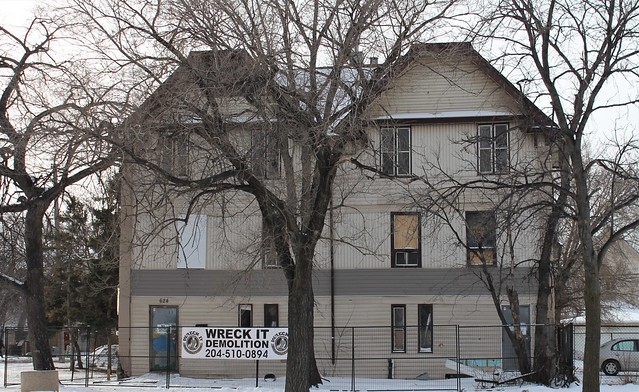

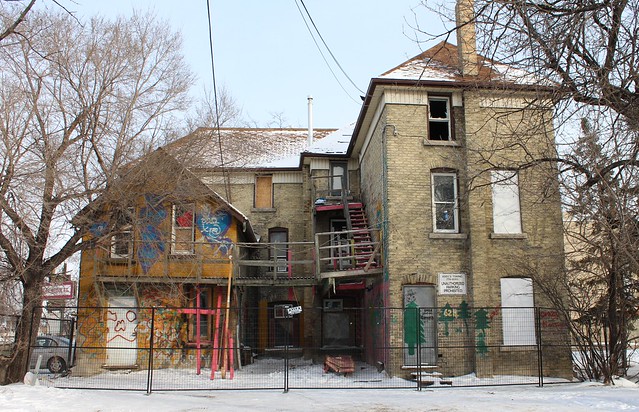







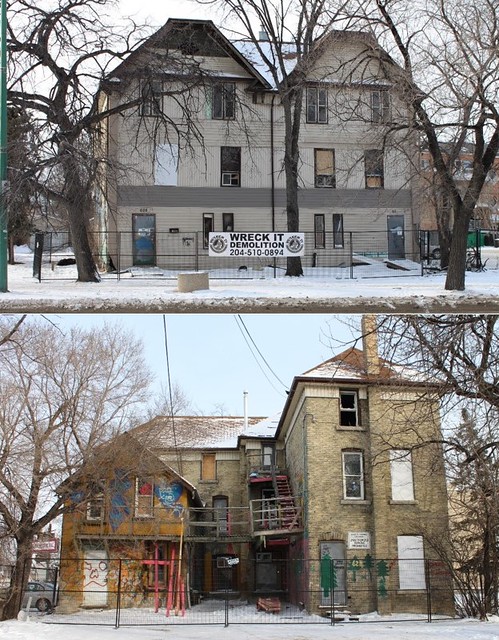

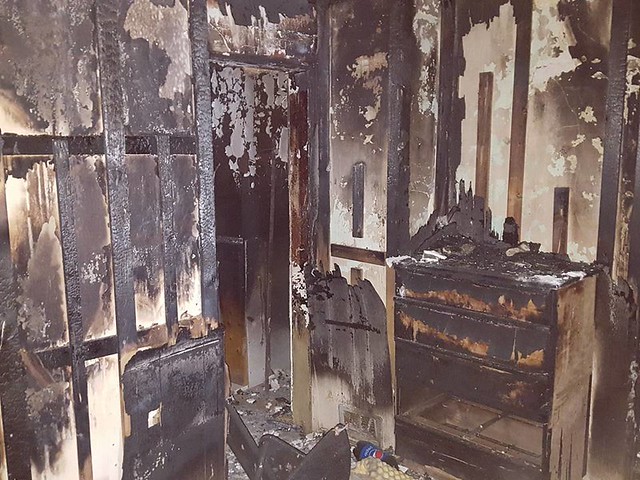
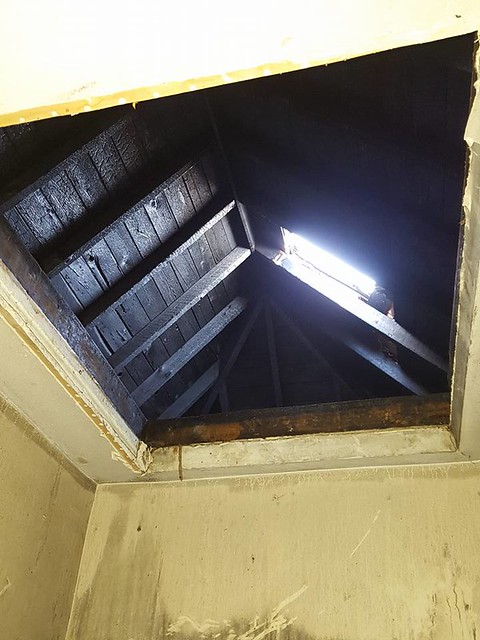

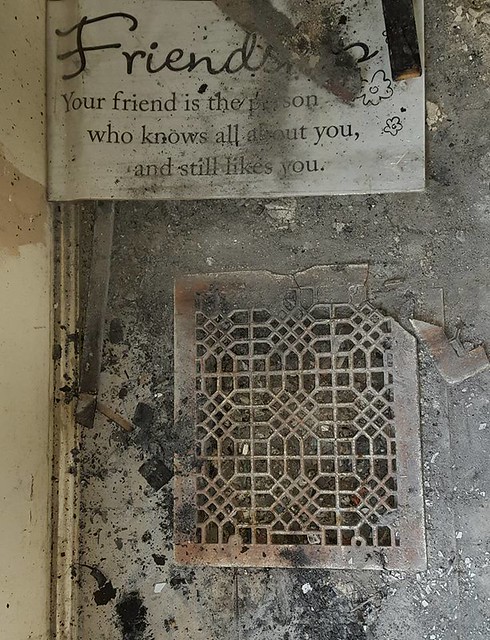
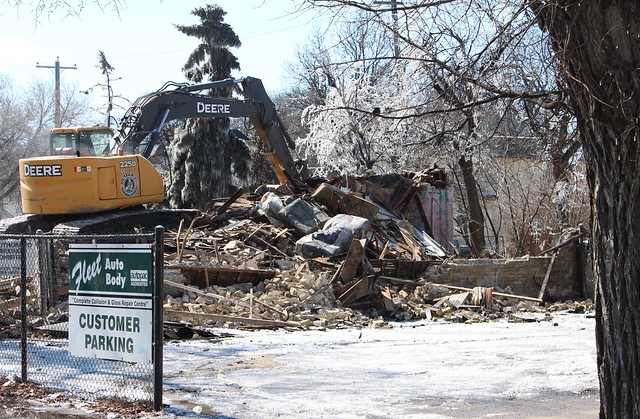
I've often wondered about this places history over the years.
ReplyDeleteGreat pics and awesome research. Thanks for posting this :)
The energy-efficient home search at https://www.dhesirealestate.ca/houses-for-sale-in-brampton led us to a net-zero ready house in Springdale with solar panel compatibility!
ReplyDelete